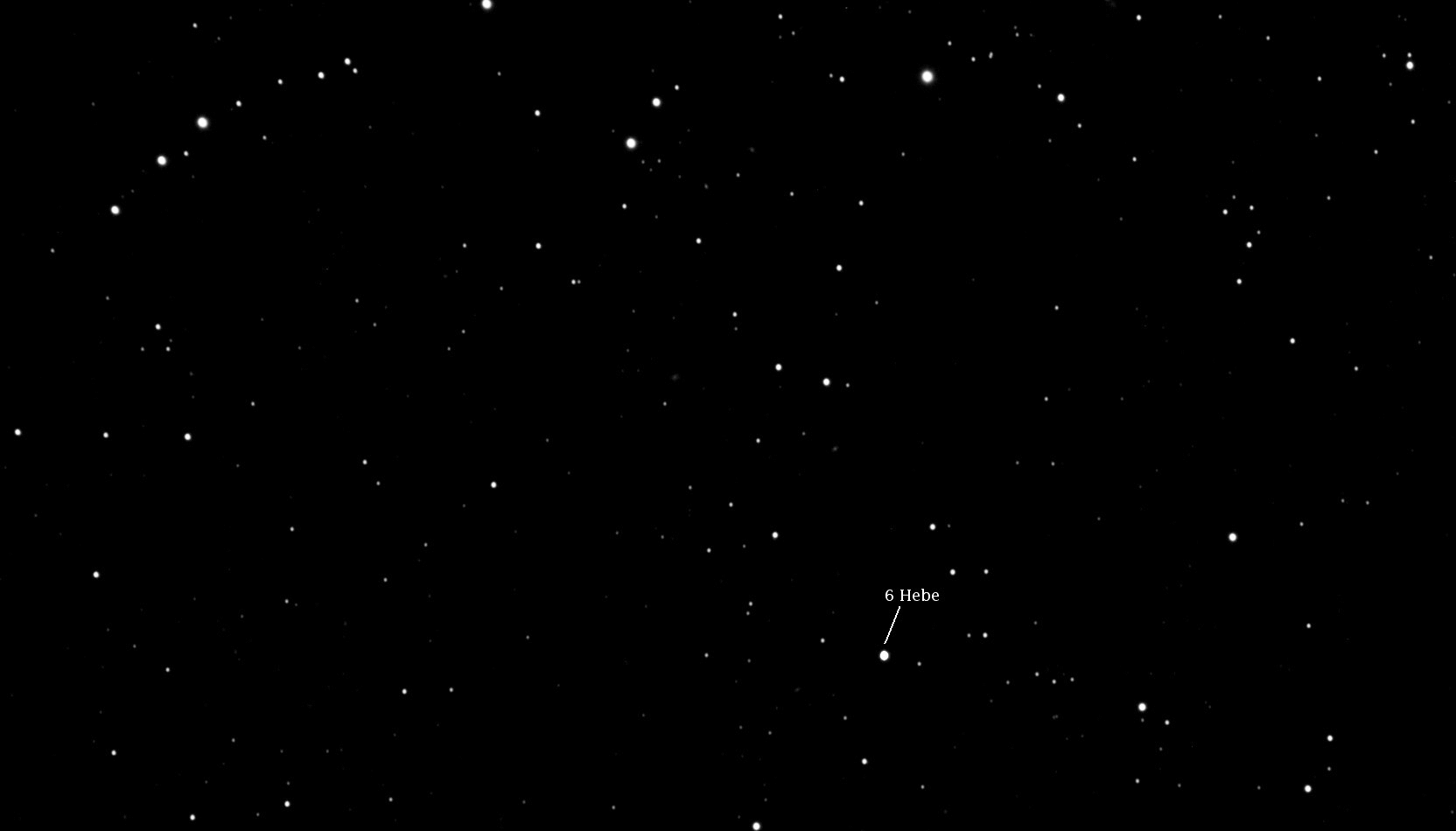
Asteroid 6 Hebe is a large main belt asteroid that orbits the Sun between Mars and Jupiter. It is the thirteenth largest asteroid by mass, but is the fifth brightest object in the asteroid belt behind Vesta, Ceres, Iris and Pallas. It was discovered on July 1, 1847, by Karl Ludwig Hencke, and was the sixth asteroid discovered. Hebe is believed to be the parent body of H chondrite meteorites and IIE iron meteorites, which remarkably accounts for 40% of all meteorites that hit our planet. This is likely due to the fact that Hebe is relatively large and happens to be extremely well placed to send impact debris into Earth-crossing orbits.
This animation shows two images of the same area of the sky on two successive nights in order to reveal the movement of the asteroid. The asteroid can be seen moving against the background of the stars between the two images taken on January 12 and January 13, 2008.
On March 5, 1977, Hebe occulted a 3rd magnitude star in the constellation Cetus. As a result of that occultation, a small Hebean moon was reported by Paul D. Maley. No other observed occultations by Hebe have been reported, and the discovery has not yet been confirmed.
The images were taken using a Takahashi FCT-150 refractor and an SBIG STL-11000M CCD. The images were taken from my backyard in Scottsdale, Arizona.
January 12 & 13, 2008
Images by Sid Leach
Scottsdale, Arizona
Recent Images.
Complete list of images.
Description of equipment used to acquire images.
Home
Feedback and comments should go to Sid